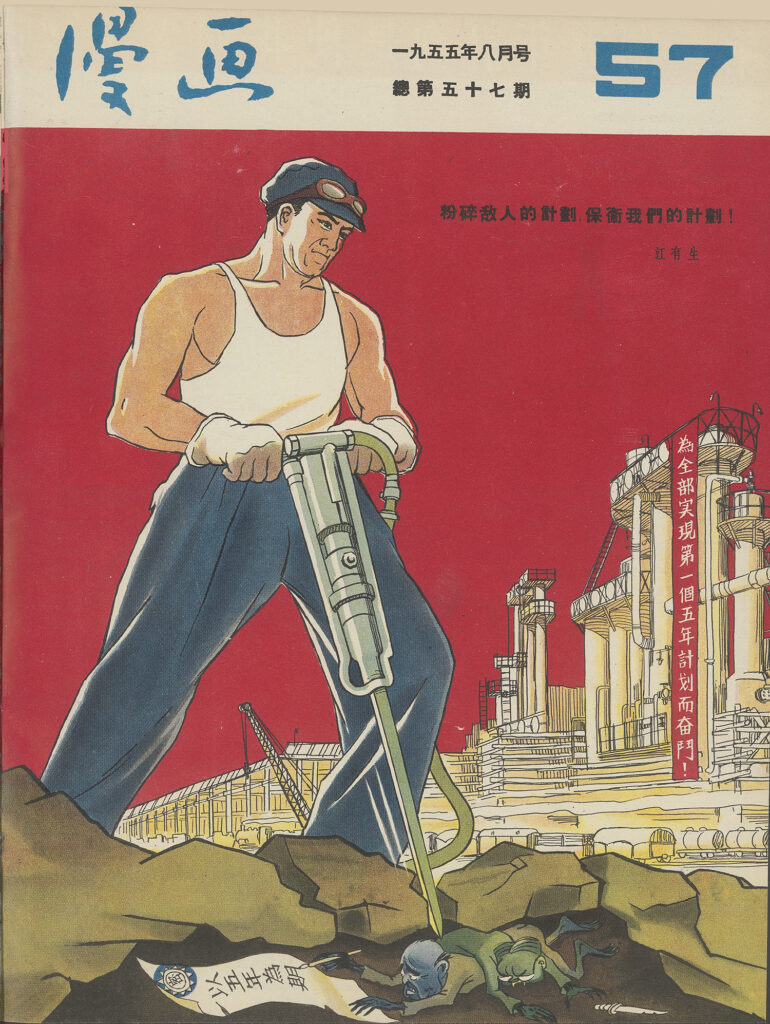Manhua Digital Archive
Understanding Chinese policy initiatives through the lens of colorful and creative art
Manhua (漫画; 漫画月刊) was a state-sponsored pictorial magazine published in the People’s Republic of China through the 1950’s.
The monthly publication was founded by Mi Gu (米谷, 1918-1986), then art section head of the Shanghai Edition of Liberation Daily (Jiefang ribao, 解放日报). At inception, the magazine featured graphic calls-to-action for the Korean War effort. From 1953 forward, the magazine expanded its length, increased its frequency, and addressed the campaign needs of the day: instituting land reform. The new format allowed for complex and colorful depictions of daily life augmented by public policy initiatives.
By the late 1950’s, the fallout from the Hundred Flowers Campaign had cast a repressive pall over political cartoonists. Illustrations from 1958 onward focused on encouraging people to join Great Leap Forward activities, with a noted departure away from slice-of-life humor. No matter the focus of the cartoons domestically, the international message was clear. Resisting imperialism and solidarity across socialist movements were major themes of every Manhua issue from 1950 to 1960.
